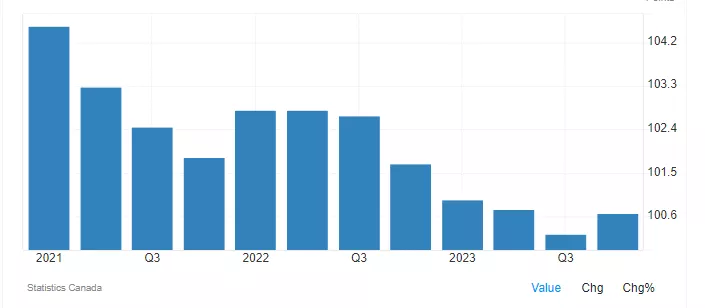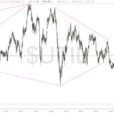
 Image source: Pixabay
Image source: Pixabay
The debate was kicked off when the Bank of Canada’s deputy governor, Carolyn Rogers, threw down the gauntlet, claiming that Canada faces a productivity emergency. As if the issue can be dealt with by sending in a squat team to boost productivity immediately. By pointing to a general weakness in Canadian workers’ performance, the Bank is staking out an argument that efforts to bring inflation into line are directly related to improved economic efficiency. The deputy governor stresses that “an economy with low productivity can grow only so quickly before inflation sets in. But an economy with strong productivity can have faster growth, more jobs, and higher wages with less risk of inflation,”. Rogers concludes with a series of platitudinous references, urging policymakers and the private sector to make investments in high-productivity sectors. It is hard not to conclude that the Bank is making a self-serving statement when it comes to defending the need for a relatively restrictive monetary policy to dampen inflation.Private sector economists immediately jumped on this bandwagon by dissecting the root causes of productivity performance. David Rosenberg pulls out the well-worn trope that private investment is “crowded out” by government spending. To say that the financial markets in Canada, bank lending and equity markets, are denying the private sector capital is without foundation. That commercial banks are not lending to the private sector has more to do with the limited market opportunities and creditworthiness in the business sector. Ottawa’s borrowing is not in direct competition with the private business.
Canadian Labour Productivity Index
So, what do economists know and understand about the issues surrounding productivity?* Measuring worker efficiency is relatively straightforward in basic sectors, such as manufacturing, resource extraction, and construction; * Measuring worker efficiency is services is very difficult, very imprecise, and open to a myriad of problems; how do you measure the output in medicine for, say a family doctor, ER visit, and aftercare; how do you measure the output in the judicial system, public safety and security, etc? * To the extent that modern economies are dominated by services, most of which have no easy to technique to record output, compromises any measures of aggregate performance.* Worker efficiency is heavily dependent on capital employed; the term “total factor productivity” is a measure, albeit, imprecise, of how workers machinery, and technology combine to produce goods or services; statisticians are still struggling with how best to record total productivity.* Canada’s market size is just 1/10th the size of the US; Canadians have to contend with a market that lacks scale and hence is less competitive. Economists at the Economists at the make an excellent case that Canada’s productivity results are “a symptom, but not the disease”. They correctly advocate the need for more research on ways to measure and understand productivity.More By This Author:The Choice Of Inflation Measure Depends On The Eye Of The Beholder
It Is The End Of An Era For Negative Interest Rates
Central Banks Don’t Like To Told When To Cut Rates














